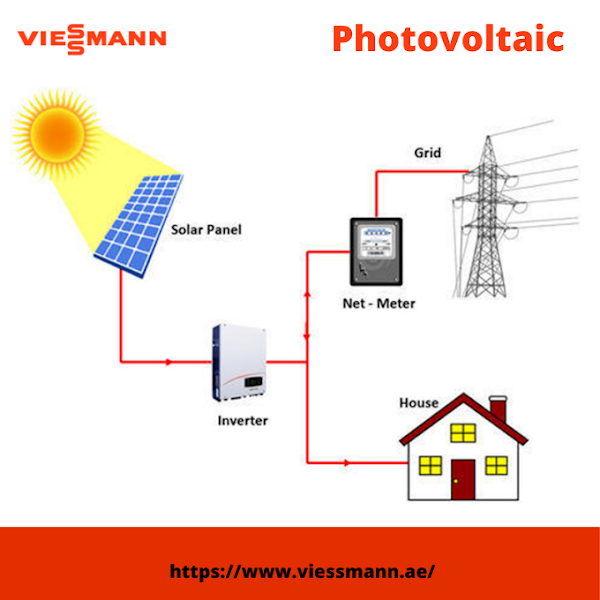Photovoltaic | Viessmann
Viessmann are Photovoltaics (PV) converts light into electricity using semiconducting materials that reflect the effect of photovoltaic photochemistry, and electrochemistry. The photovoltaic effect is used to commercially generate electricity and photosensors.
A photovoltaic system uses solar modules, each comprising a
number of solar cells, which generate electricity. PV insulation can be
installed on the floor, on the roof, on the wall or in the float. The mountain
can be adjusted or used a solar tracker to track the sun in the sky.
Solar PV has certain advantages as a power source: once
installed, its performance does not produce pollution and there is no
greenhouse gas emissions, it shows simple simplicity in terms of energy
requirements and silicon has high availability in the Earth crust, although
other elements are required in the PV system. Silver-like production will
eventually hinder further technological growth. Other disadvantages such as
constant power generation and the need for power companies to compensate for
more solar energy in combination to provide more reliability. General power
supply to control peaks of need and possible uncertainties. Production and
installation causes pollution and emissions of greenhouse gases and there are
no effective recycling systems when they are at the end of their life span of
10 to 30 years.
Each PV cell is
usually small, usually producing about 1 or 2 watts of energy. These cells are
made up of different semiconductor materials and are usually less than the
thickness of four human hairs.In order to withstand the outside for many years,
the cells are bonded between protective elements with a combination of glass
and / or plastics.
Modules can be used individually, or a few can be linked to
create arrays. One or more identical members are then connected to the
electrical grid as part of the complete PV system.
PV modules and arrays are one part of the PV system. Systems
include solar panels that point to solar panels, as well as components that
take up current modules generated by the modules and convert them into
alternating current (AC) power that is used to power all electrical appliances
in your home.
The largest PV systems in the country are located in
California and generate energy for resources to be distributed to their
customers.
Soon solar cells were
being used to power the satellites in space and with little things like
counters and clocks. Today, electricity from solar cells has become
increasingly competitive in many regions and photovoltaic systems are used in
large scale to help grid power.
Silicon Solar Cells
These cells are usually assembled into large modules that
can be placed on the roofs of residential or commercial buildings or used on
floor racks to create large, scale-assisted systems.
Thin-Film Solar Cells
One of the most widely used photovoltaic technologies is
known as small film solar cells because they are made of very thin layers of
semiconductor material, such as cadmium telluride. Copper indium gallium
diselenide. The thickness of these layers is only a few micrometers — that is,
half a million feet.
Photovoltaics is the direct conversion of light into
electrical energy using semiconducting materials such as silicon. The effect of
photovoltaic is an important subject learned in physics and chemistry.

Comments
Post a Comment